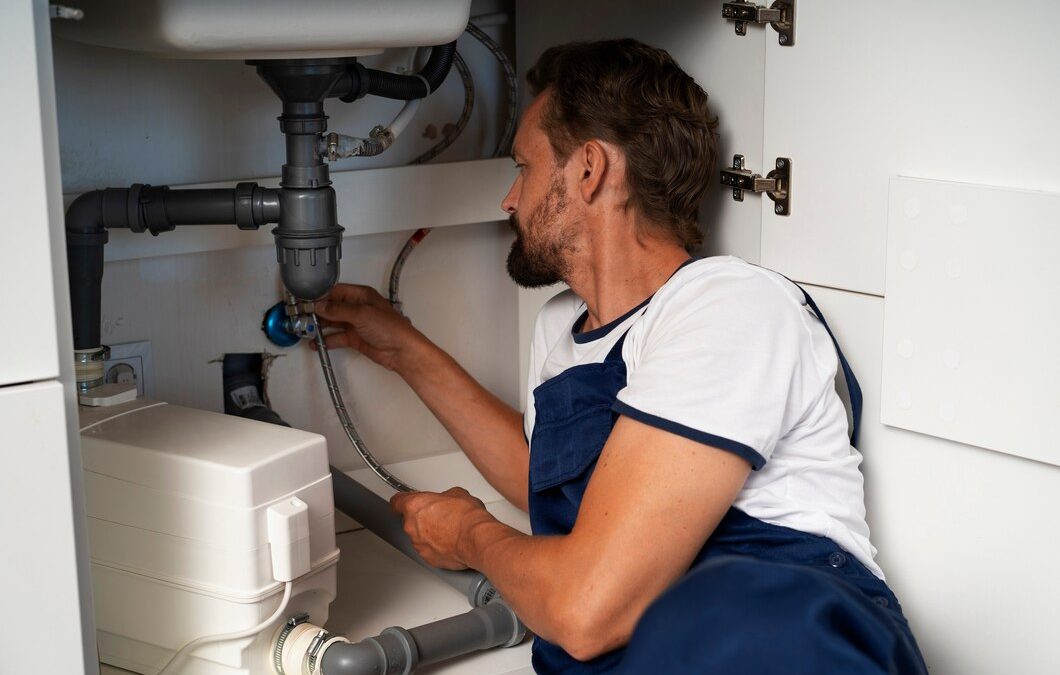Renovating a commercial property can be a big task, especially when it comes to managing the plumbing system. If you’re planning to revamp your building in 2024, you need to consider how these changes will affect your plumbing. Upgrading or altering your plumbing system can ensure everything runs smoothly and efficiently, avoiding costly problems down the road.
When planning a renovation, it’s crucial to incorporate plumbing considerations early in the process. This helps prevent disruptions and supports seamless integration with your existing system. If you’re making changes to your building’s layout, it might involve moving or adding plumbing fixtures. Understanding how these changes impact your plumbing infrastructure is key to a successful renovation.
Another vital aspect is ensuring compliance with local building codes and regulations. Staying up-to-date with these rules guarantees your renovation meets all safety and legal standards. By prioritizing plumbing upgrades and maintenance as part of your renovation strategy, you can ensure your commercial property operates efficiently and remains compliant with all necessary regulations.
Key Considerations for Plumbing During Renovations
When renovating a commercial building, it’s essential to account for the plumbing infrastructure. One crucial factor is understanding the impact that new layouts or expanded spaces may have on your existing plumbing system. Adding more restrooms or kitchen areas, for instance, will increase water demand and may require larger pipes or additional plumbing fixtures to handle the load effectively.
Another key consideration is ensuring compliance with local plumbing codes and regulations. Building standards can vary depending on your location, so it’s important to familiarize yourself with these rules. Compliance isn’t just about avoiding fines; it ensures the safety and reliability of your plumbing system. Make sure to obtain the necessary permits before starting any renovation work to avoid potential legal issues.
Steps for Assessing Your Current Plumbing System
Before diving into any renovation project, conducting a thorough assessment of your current plumbing system is vital. Start by inspecting all visible pipes for signs of corrosion, leaks, or wear and tear. This initial visual check can help identify obvious issues that need immediate attention. Next, test the water pressure in various parts of the building to ensure it meets the standard levels.
After your initial inspection, it’s wise to bring in a professional plumber for a more detailed evaluation. Professionals can use specialized equipment like cameras to inspect pipes from the inside, identifying hidden problems such as blockages or internal pipe damage. They can also provide insights into potential areas for improvement, such as replacing outdated pipes with more durable materials.
Finally, create a comprehensive report of your findings. Documenting the state of your plumbing system helps in planning for necessary upgrades and future maintenance. Regular professional assessments ensure that your plumbing system remains efficient and reliable throughout the renovation process and beyond.
How to Implement Water-Saving Practices in Your Commercial Building
Implementing water-saving practices in your commercial building can significantly reduce water usage and lower utility bills. One of the simplest methods is to install water-efficient fixtures. Replacing old faucets, toilets, and urinals with low-flow alternatives can save thousands of gallons of water annually. These fixtures maintain performance while using less water, making them a practical choice for any business.
Beyond fixtures, there are several practices we can adopt to save water. For instance, regularly checking for leaks and repairing them promptly is crucial. Even small leaks can waste large amounts of water over time. We should also consider installing automatic shut-off valves that stop water flow when a leak is detected. Additionally, educating employees or tenants about water conservation practices, such as turning off taps when not in use, can promote a culture of sustainability within the building.
Benefits of Regular Maintenance for Eco-Friendly Plumbing Systems
Regular maintenance is essential for keeping eco-friendly plumbing systems running efficiently. Maintenance helps us identify and fix small problems before they become major issues. For example, periodic inspections of low-flow fixtures and water-saving devices ensure they are functioning properly and providing the intended benefits. Regularly maintaining tankless water heaters and greywater systems can also extend their lifespan and improve efficiency.
Creating and following a maintenance schedule is a best practice for any commercial property. This schedule should include routine checks, cleaning, and servicing of plumbing components. It is also important to have professional evaluations to assess the condition of the plumbing system. Professionals can spot potential issues that we might overlook, ensuring the system remains efficient and reliable. Keeping up with maintenance not only supports sustainability efforts but also saves money in the long run by preventing costly repairs and replacements.
Conclusion
Embracing eco-friendly plumbing practices in commercial buildings is a vital step toward sustainability and efficiency. By understanding the importance of green plumbing, investing in the right technologies, and implementing water-saving practices, we can reduce our environmental impact significantly. Regular maintenance further ensures that these systems continue to operate at their best, providing lasting benefits for both the environment and your business.
Taking these steps will not only lower your utility costs but also enhance your reputation as a responsible and forward-thinking organization. At Plumb Krazy Plumbing, we specialize in helping businesses like yours implement and maintain eco-friendly plumbing systems. Get in touch with us today for commercial plumbing services.

